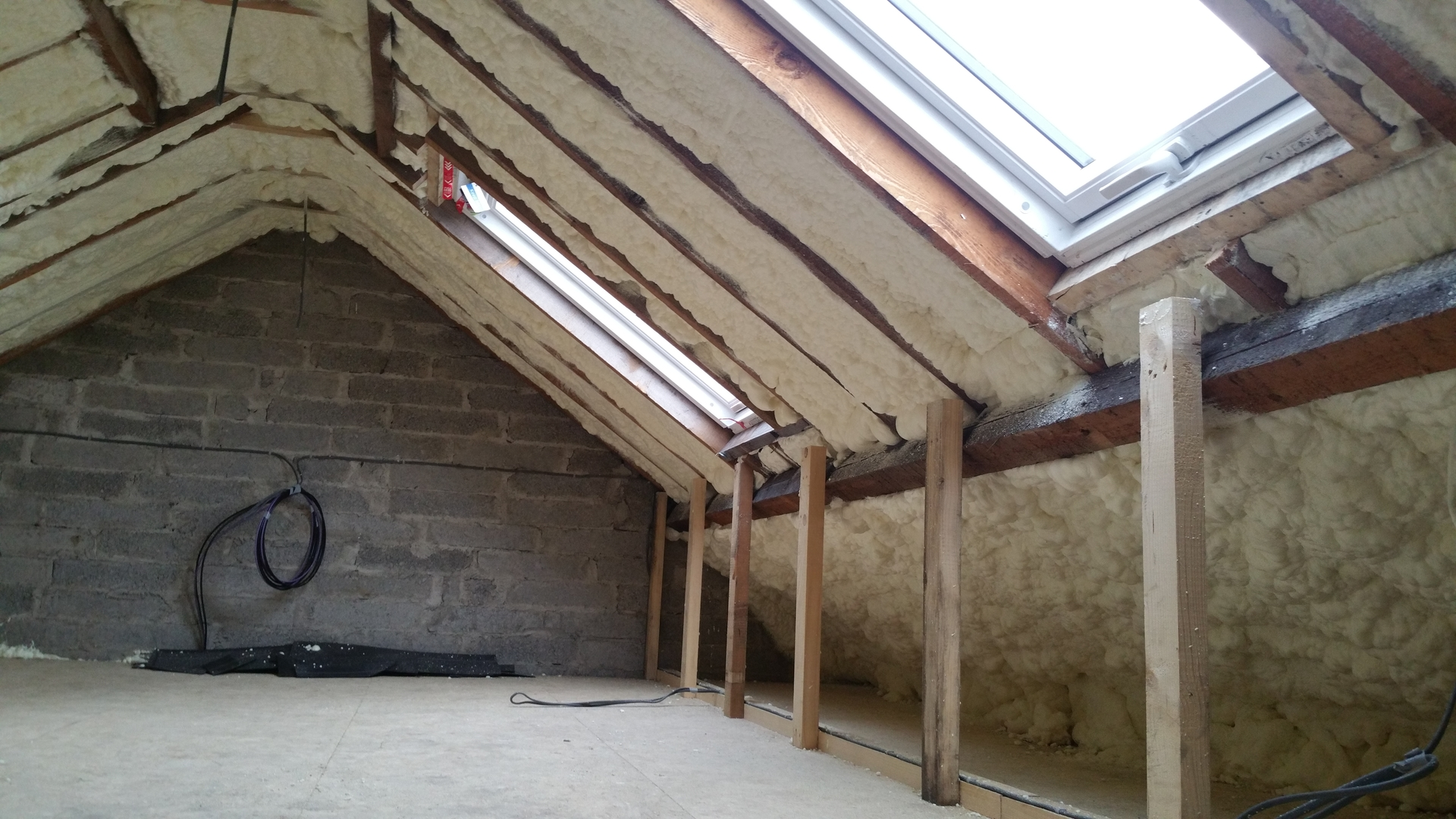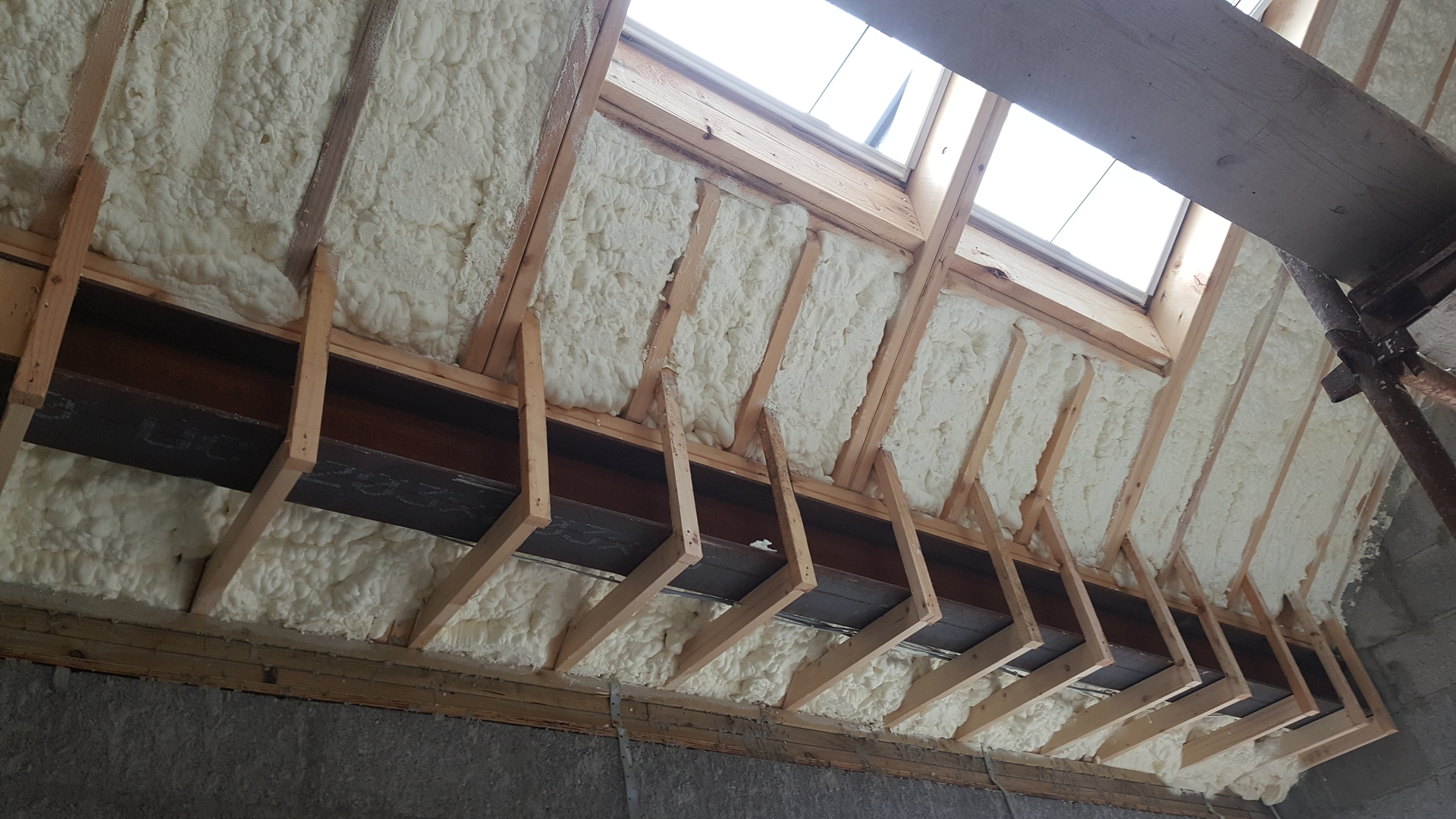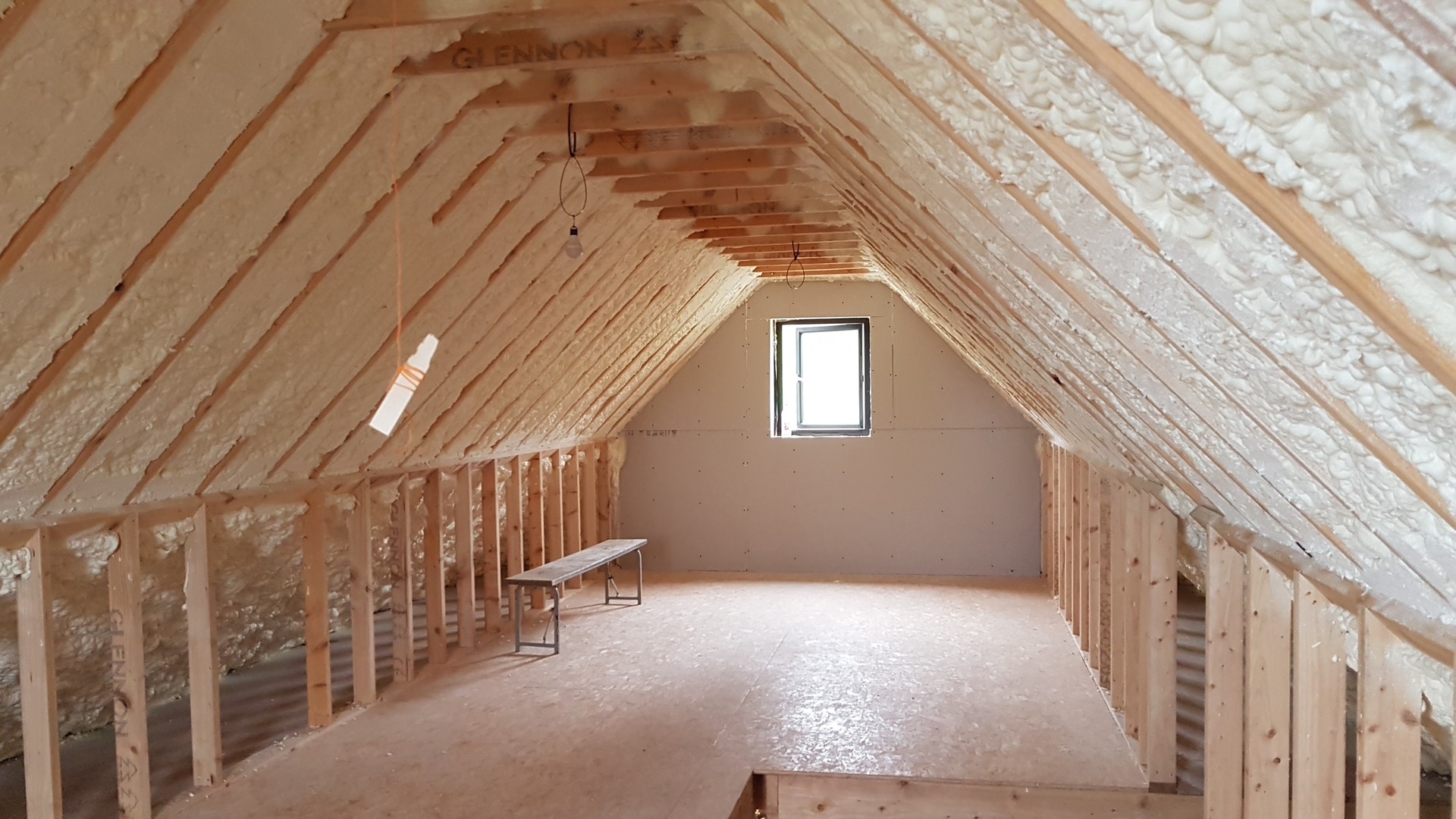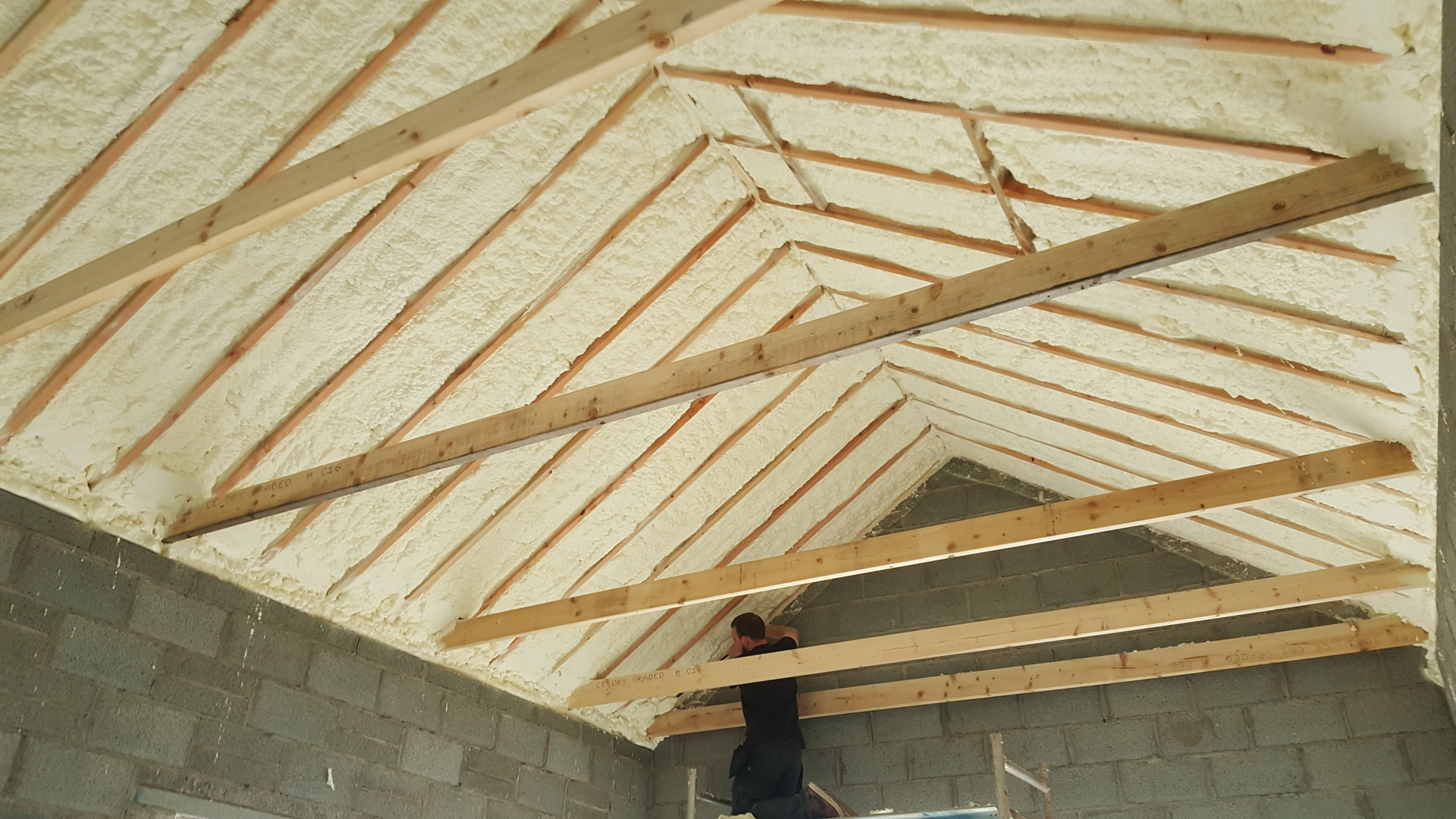Spray Foam Insulation Cost Per Square Meter
SEAI Roof Insulation Grant
Apartment
SEAI Roof Insulation Grant-
SEAI Registered Contractors
Terraced House
SEAI Roof Insulation Grant-
SEAI Registered Contractors
Semi Detached House
SEAI Roof Insulation Grant-
SEAI Registered Contractors
Detached House
SEAI Roof Insulation Grant-
SEAI Registered Contractors
Spray Foam Insulation Cost
The cost of insulation will vary depending upon the type of foam and its quality, as well as the difficulty of accessing the area, labor required, and travel time to your property.
The cost to insulate your loft or attic depends on the material used and the property. Below is an example cost for an 150m2 detached home.
To let water vapour escape from the roof, a vent card with breathable properties is attached 50mm above the roofing felt. The card is then placed on top of it, unless the roof has been properly batten.
Spray foam insulation occurs when 2 compounds, an isocyanate resin and a polyresin, are combined in an exothermic reaction. This happens after they have been fired together by guns.
The polyurea family of compounds includes the resulting material. It comes in three forms: You can spray open-cell foam, closed-cell foam or slow pour foam.
It is commonly used for insulation in the home, attic and wall, floor, roof, roof, and exterior applications. Once it has been applied, it lasts for many years and performs at an extremely consistent level. It sprays into every crevice, so it is ideal for keeping your envelope airtight.

Average Cost of Spray Foam Insulation for a 3 Bed Semi
Closed cell foam insulation is used mostly on metal and concrete surfaces. Like open cell spray foam, closed-cell foam’s cells do not allow water vapor to escape, which is why it is called closed cell foam.
Yes, the SEAI government supports grants for loft insulation, external and internal wall insulation.
Ask your contractor for assistance with the forms. All of our contractors have been registered with SEAI. They can assist you in applying.
We have a network that includes spray foam insulation contractors in your area who can provide you with the full range of spray insulation services.
Spray foam insulation is available in two main types, open cell or closed cell. Both have their own properties and can be used in different ways. While open cell is mostly used in residential applications, closed cell can be used in industrial and commercial applications. Spray foam insulation costs will vary depending on the type and depth of the foam, as well as other factors.
Costs for spray foam insulation will vary depending upon the material being used. You will use open cell spray insulation if you’re insulating a roof, attic, floor, wall, or roof of a residential house. You will use closed cell spray foam if you are insulate a metal shed, container, shipping container, or industrial pipes. You can also choose the type of foam that you use to insulate.

Investing in Spray Foam Insulation For Your Business & Home
Costs are affected by how thick you put insulation. The higher the cost, the lower the price. Building Energy Ratings can be used to determine how much spray foam is required.
You may need a shed roof or pipes for restricted access insulation. This will incur additional costs for scaffolding and a cherry picker.
If your attic is 1,000 square feet, the cost of insulation can range between EUR600 and EUR1,200. You can expect to pay EUR40 to EUR70 per hour for professional work, depending on the product cost.
Given its 1500 square foot size, the cost of attic insulation can vary from EUR800 up to EUR1400. You can expect to pay EUR40-EUR70 an hour for a specialist in addition to the cost to purchase supplies. The overall cost would be EUR1,500/EUR1,600
Spray foam insulation costs vary according to the thickness, access, and open or closed cell foam. Spray foam insulation prices range from EUR25 to EUR80 per square foot depending on thickness and type.

Spray Foam Insulation Cost per sq metre Ireland
Prices for spray foam insulation depend on the type of foam used, whether it is open cell foam or closed cell. Open cell can be used in all domestic applications: attic walls, roofs and floors; closed cell can be used on metal surfaces or concrete surfaces for commercial or industrial insulation, such as container insulation or shed insulation.
Costs will be determined by the area to be insulated. If you are insulating an attic, you will need a 50mm air space between roofing felt and insulation material. This will require a breathable vent card to be attached at the rafters. It will also increase the cost.

Call For A Free Quote on Spray Foam Insulation
How To Contact Us For A Quote & Site Survey
Steps To Follow
- Fill in the Form
- We will call and give you a guide price quote (and schedule a survey)
- We will provide a detailed attic insulation quote, the very same day as the survey
- Then let us know when you want us to start
